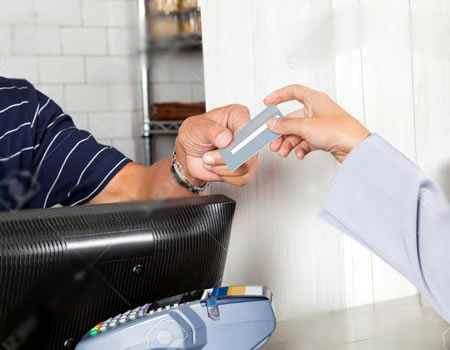Shopping online and other eCommerce has made electronic payments one of the most common payment methods. Cloud, analog, and hybrid systems support the large volume of electronic payments.
The modern payments business and systems are impacted by bank direct debit and credit card processing.
This essay will examine how electronic payment systems evolved from digital to digital, portable, and beyond.
As swiftly as technology develops, modern payment services are still evolving.
The Initial Payment System
For millennia, purchases required cash at the register. Western Union (formerly the Western Union Telegraph Company) first electronic fund transfers (EFTs) in 1871, revolutionizing money transfers.
EFTs, often known as “wiring,” became popular as fast, easy ways to send money without exchanging currency. After the turning of the century, Western Union’s main business was money transfers for the Federal Reserve.
In 1914, Western Union created charge wallets that could be utilized at many businesses, transforming payments.
Customers could use these cards to buy products on credit and repay the issuer. In the first part of the 20th century, “charge cards” were a popular electronic payment system.
The Real Evolution Era
Though charge cards and wallets were widely used at the time, they had some restrictions that prompted the creation of credit cards in the 1950s.
In 1950, Diners Club was the first to market a “general purpose” charge card; subsequent companies, such as Carte Blanche & American Express, quickly followed suit.
The pioneering use of charge cards by these early adopters laid the groundwork for the subsequent credit card revolution.
Modern credit cards allow users to carry over balances from one billing cycle to the next without paying the full amount due, whereas traditional charge cards required the full amount to be paid off at each billing cycle.
Bank of America used this method of payment, termed “revolving credit,” to issue the first modern credit card in 1958.
Unveiling The Origin Of Credit Card
BankAmericard, now Visa, was successful whereas others failed. It sent the card to inhabitants of a region where most homes became Bank of America clients, swiftly developing a base of customers to enhance merchant acceptance.
Bank of America and others continue to face numerous holdouts to credit card adoption. Though it was a half effort as the hustle behind using was far more difficult than today.
Before the early 1970s, merchants had to contact the financial institution, which further contacted the credit card business, where an employee manually verified the customer’s name as well as a credit balance to authorize the transaction.
Due to this lengthy process, many shops started allowing unverified payments if they believed the consumer or the fee was low enough.
Merchants were more susceptible to chargebacks and credit card fraud. For faster transactions, many merchants took this risk.
The Inclusion Of The Internet Within The Existential Payment System
This era saw the rise of online shopping as a speedier, more efficient alternative to traditional methods of card-not-present transactions like mail orders and phone purchases.
This was made possible by electronic verification systems that reviewed and approved digital payments instantly across a variety of platforms.
Soon after, mobile phones gained traction as viable payment terminals, enabling users to make in-store and remote purchases with the help of mobile wallets like Google Pay and Apple Pay through trading sites like bitcoin prime and others.
What Does The Future Hold?
Digital payments are becoming more popular, rewarding forward-thinking companies for fulfilling the needs of tech-savvy clients and forcing laggards to upgrade to stay competitive.
Digital point-of-sale systems and payment processor omnichannel acceptance are examples of online payment system advancement.
These industry initiatives streamline transaction processing and enable the collection of important business data, which can boost merchant earnings and payment service provider adoption.
Data protection must keep pace with technology since it raises risk.
Tokenization can address security and compliance problems while retaining sensitive data’s commercial value and accelerating digital transformation via a virtualized environment.






